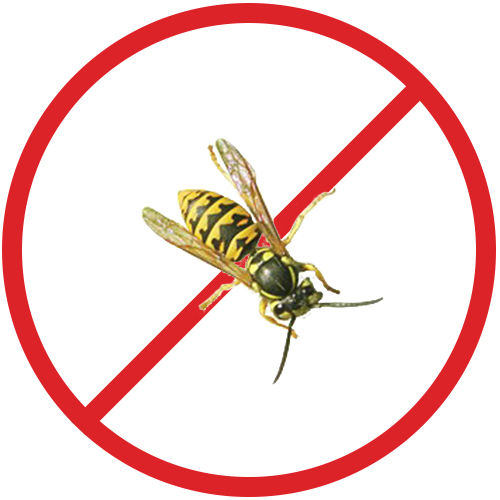Wasps

The wasp is a social insect that lives in a colony which may number in the thousands. A wasp can be easily identified by its narrow waist and its black body marked by yellow or white stripes on the abdomen. It feeds on other insects which it hunts, on nectar from flowers and on sugar from different foods like rotten fruits. A wasps’ nest is constructed with a paste which the wasps make by mixing their saliva with plant fiber, such as cardboard, wood, wood pulp, etc. Paper nests may be visible when they hang from trees or non visible when they are placed in galleries in the ground or well located in the cracks in a brick wall. The main defense of the wasp is its sting located at the end of its abdomen, used to inject venom. This venom is also used to paralyze other insects that are then brought to the nest and saved alive. These insects are cut up in pieces, then chewed up to feed larvae. Contrary to bees, wasps can sting multiple times.
At the end of summer, male individuals are born in the colony and mate with future queens to ensure the start of a new colony the following year. In fact, only fertilized queens survive winter whereas males and female workers perish with the cold. Queens find shelters and hibernate there. At the beginning of the following summer, a fertilized queen starts the construction of its nest and takes care of the first generation (eggs, larvae and female workers). Once the first female workers are mature, they maintain the nest and take care of the queen and the eggs.
- Any human or pet that gets near a wasp’s nest can be stung at any time.
- A wasp’s sting may cause itching, swelling and, in extreme cases, life-threatening allergic reactions.
- Unceasing presence of wasps on food during outdoor meals.